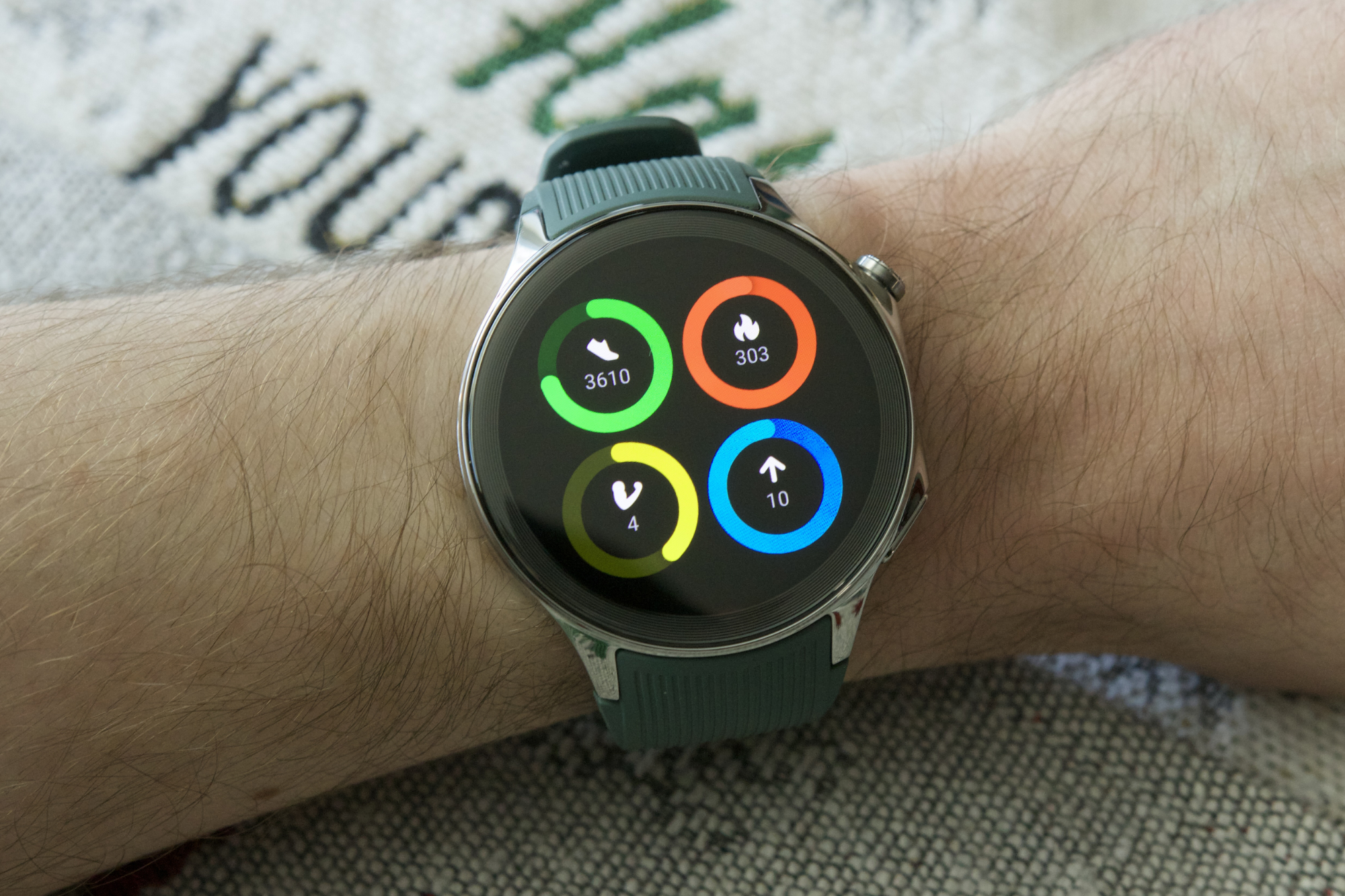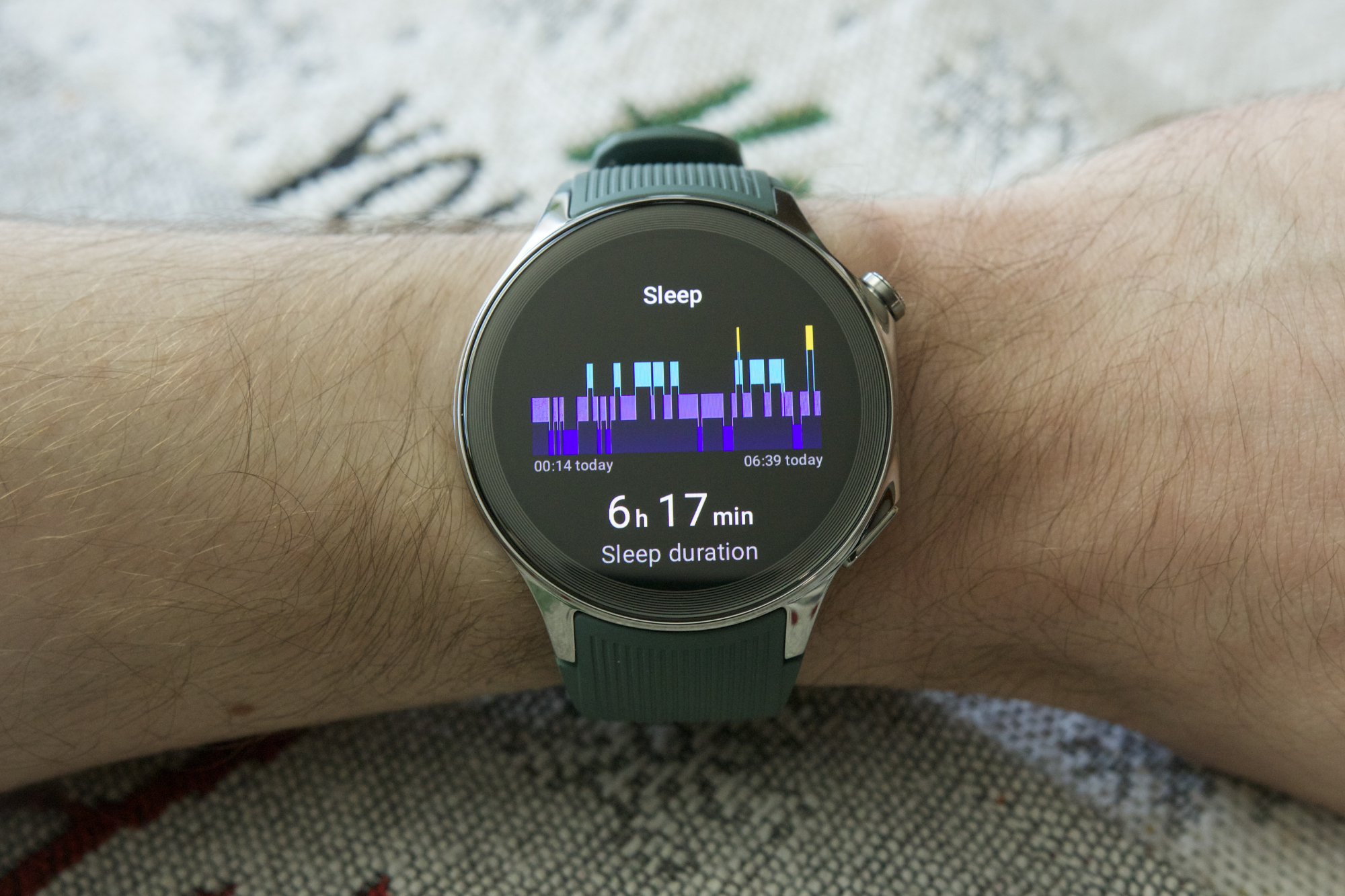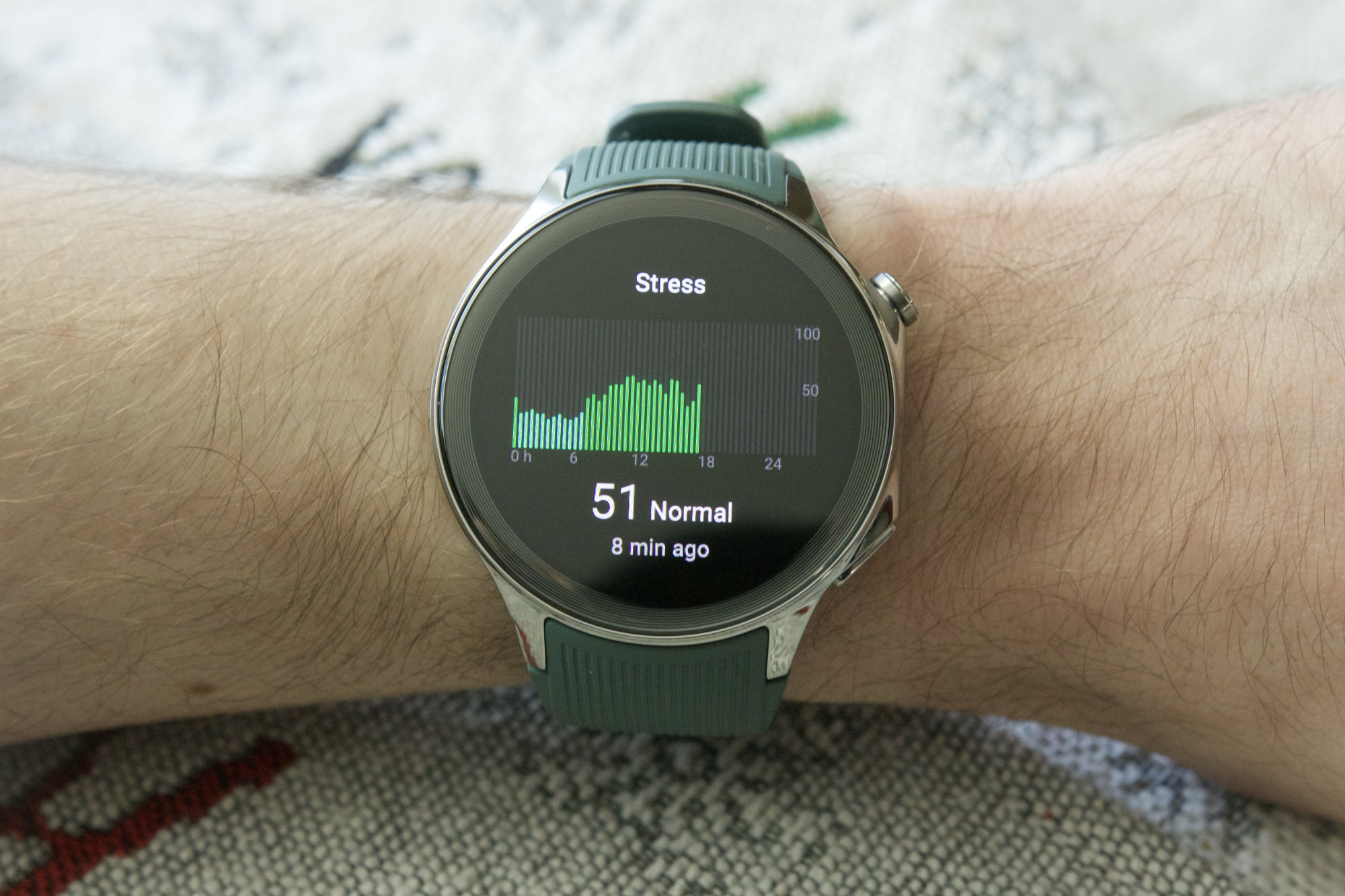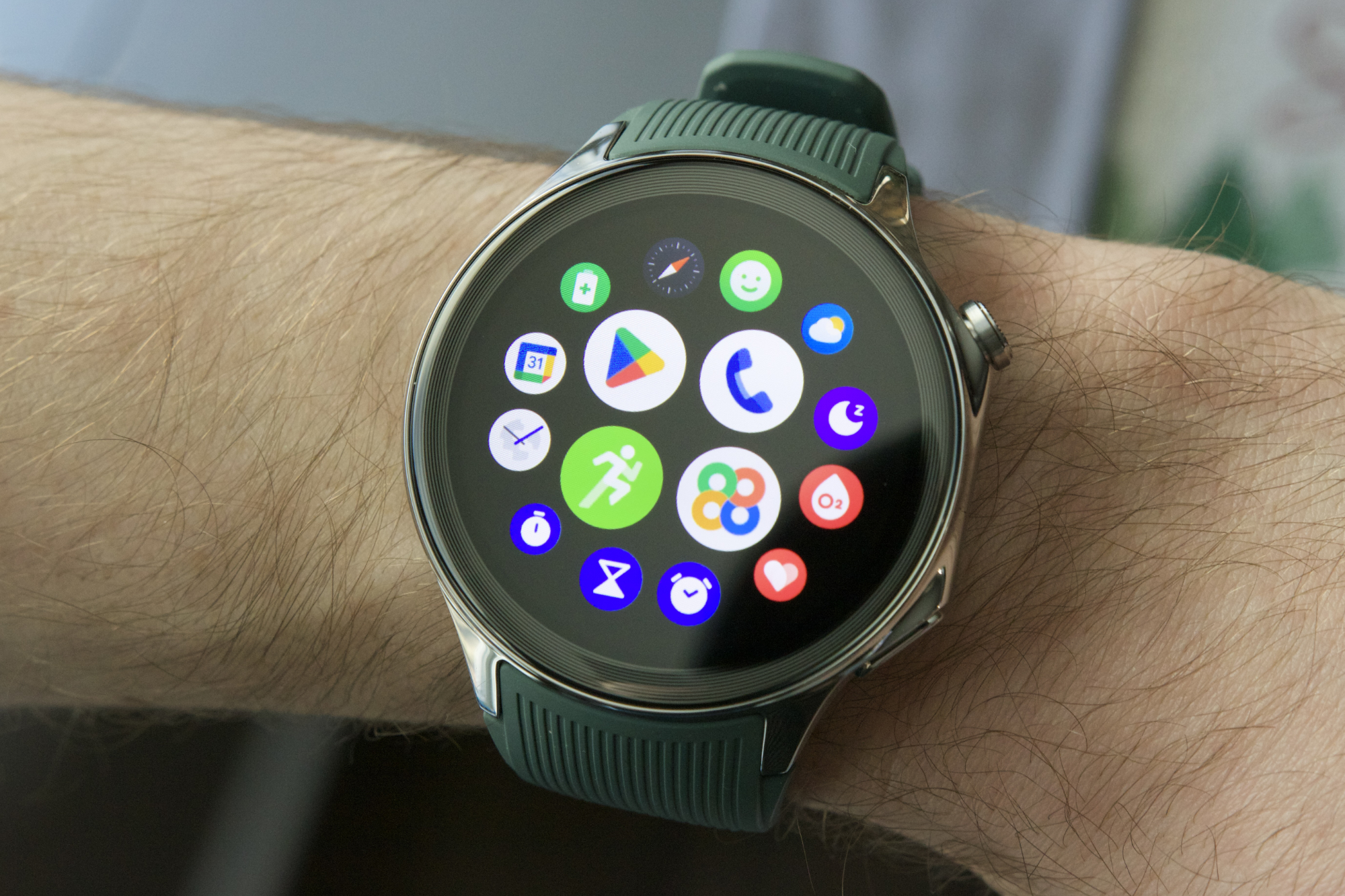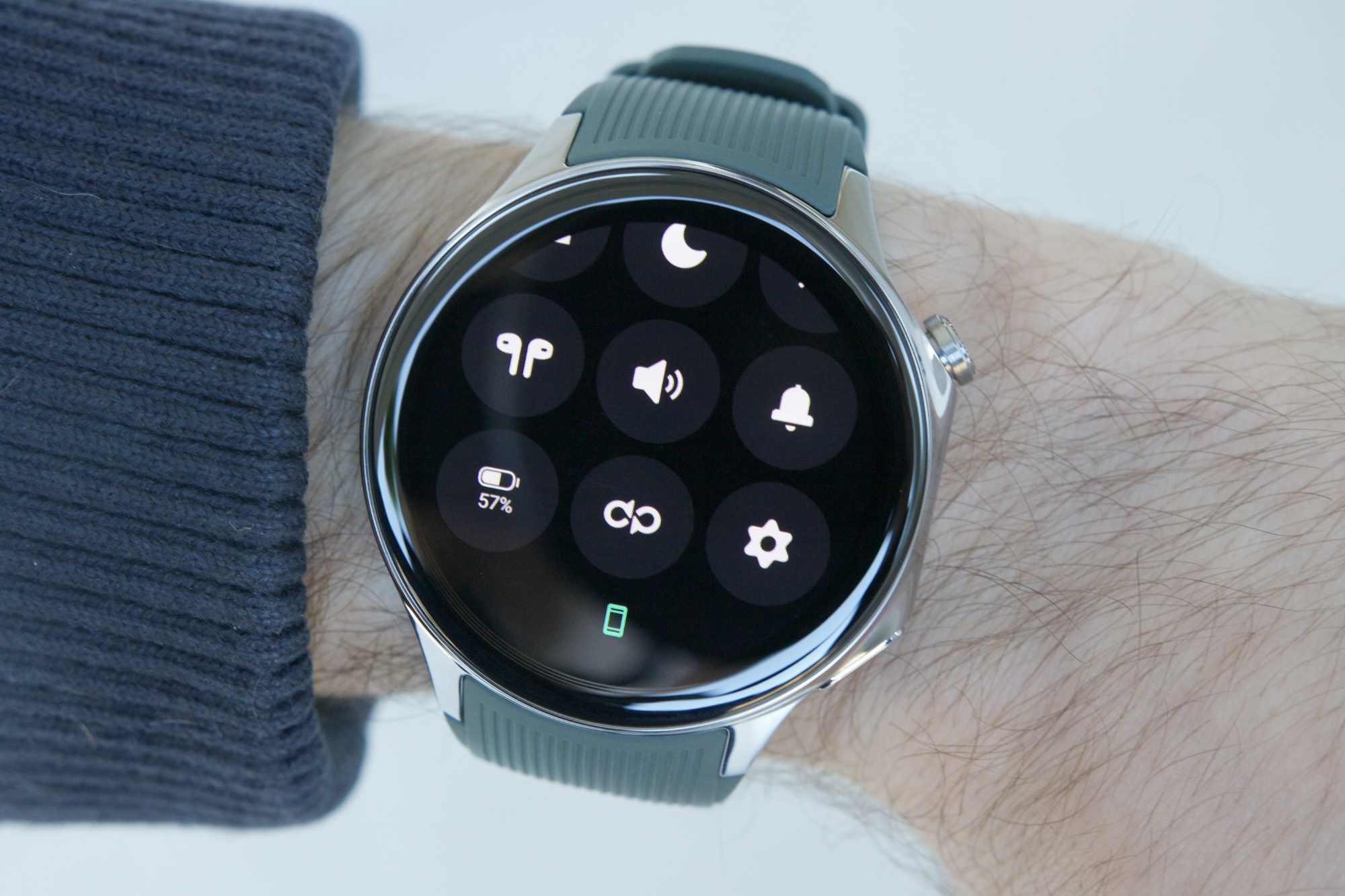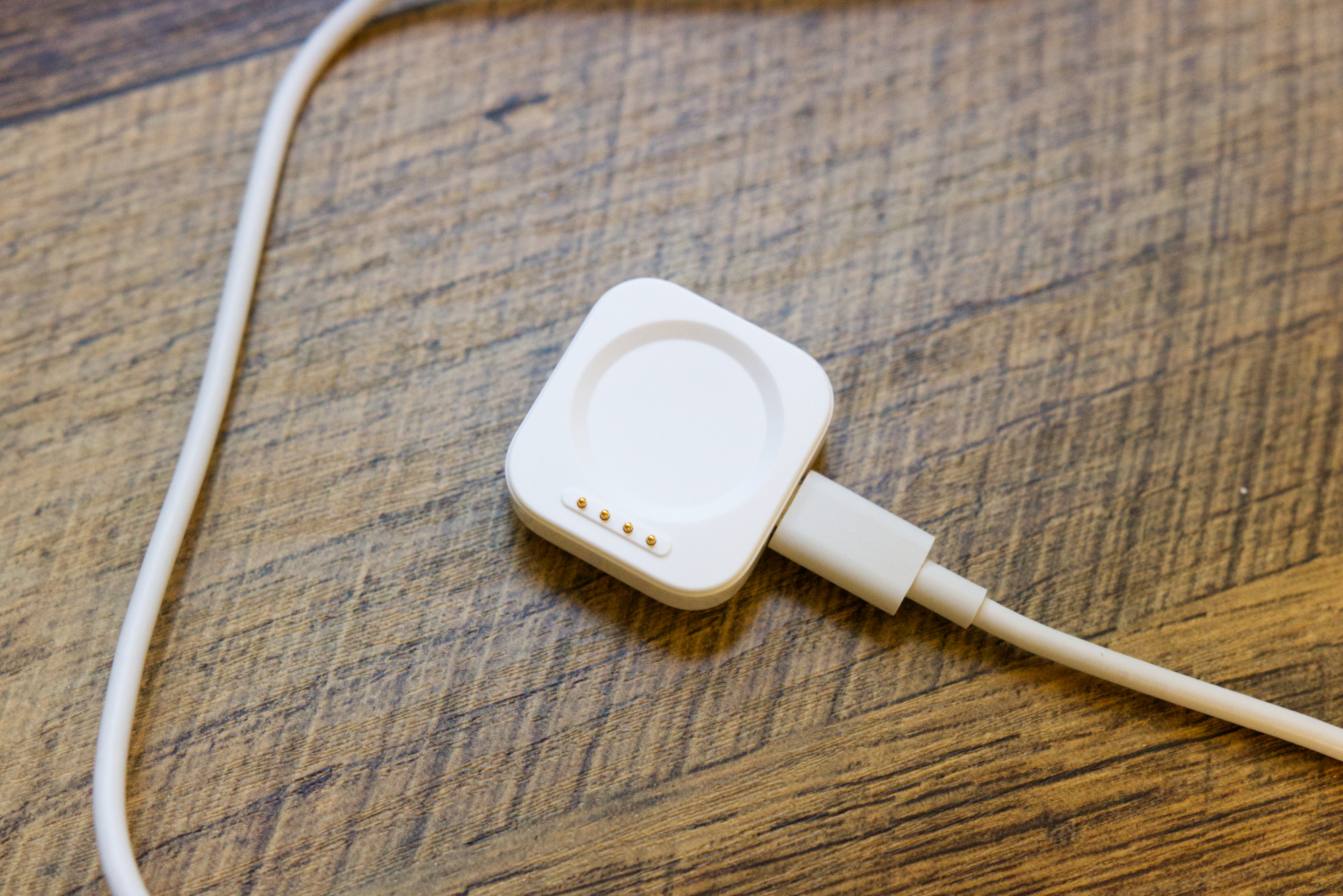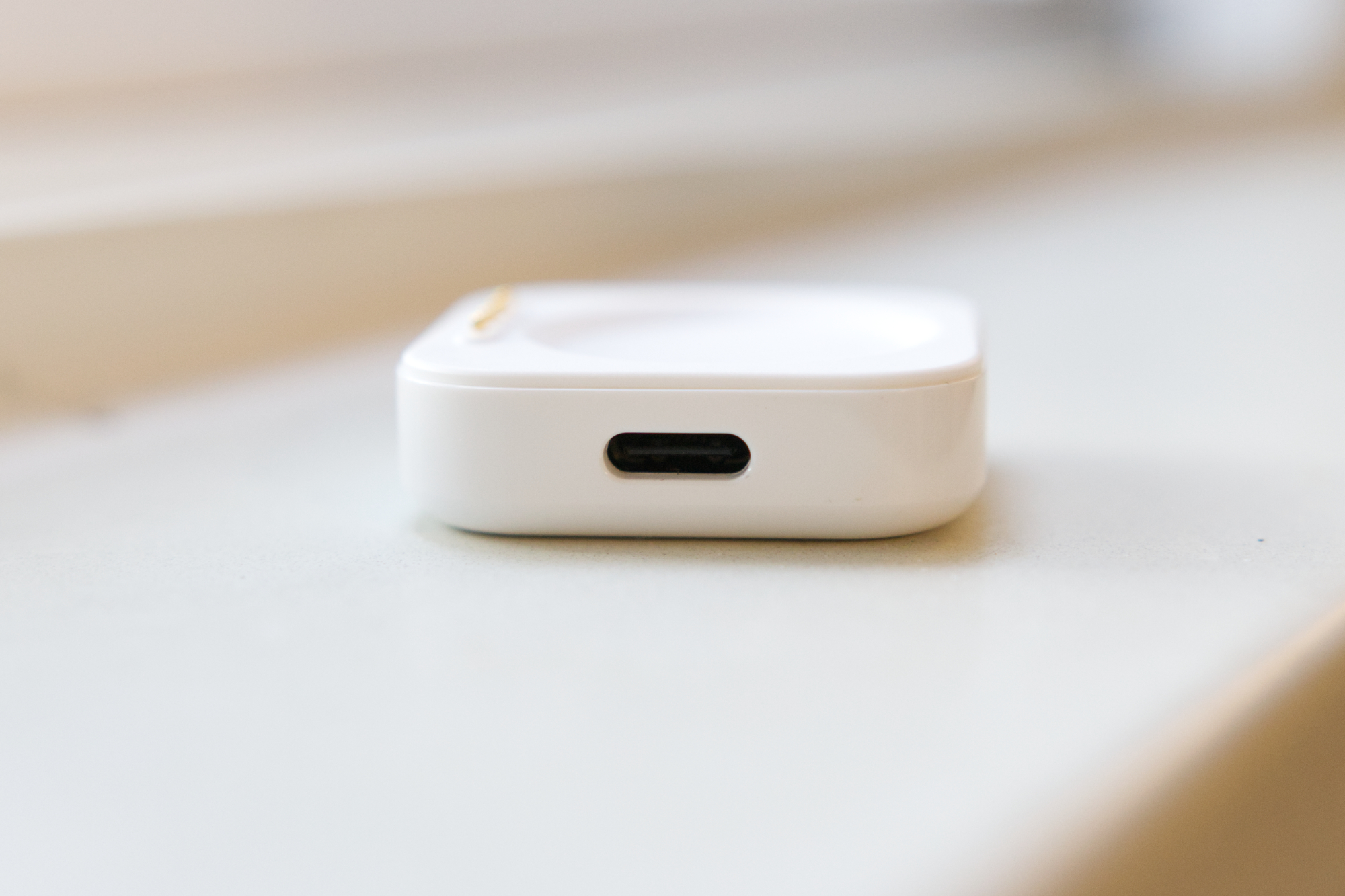“The OnePlus Watch 2 has excellent battery life and a lovely design. It's a decent Wear OS watch, but with some big caveats.”
- Premium design and materials
- Very comfortable to wear
- Fast, snappy performance
- 3+ days of battery life
- Unique hybrid mode
- Rotating crown doesn't do anything
- Inaccurate step and sleep tracking
- Discouraging health app
- Poorly designed watch faces
- Seriously, what's up with the crown?
If at first you don’t succeed, try, try again. That perfectly summarizes OnePlus’ short and rocky history with smartwatches. The company’s first smartwatch — the OnePlus Watch — was released in April 2021 to very mixed reactions. It was praised for its nice design and long battery life but largely criticized for its limited and buggy software.
Fast forward to February 2024, and OnePlus has launched its second smartwatch. Aptly named the OnePlus Watch 2, I’m really impressed by its nice design and long battery life. The software is also a lot more capable this time around — but there are a few other issues I wasn’t expecting. It’s a very mixed bag and one I’m not entirely sure how to feel about. Let’s dig in.
The OnePlus Watch 2 has an incredible design

I’ll get into my issues about the OnePlus Watch 2 soon enough, but one of my favorite things about the smartwatch is its design.
The OnePlus Watch 2 is about as nice as smartwatch construction gets. The body is made of stainless steel, while the glass covering the display is 2.5D sapphire crystal. While I haven’t deliberately tried scratching the glass, OnePlus claims it has a Mohs hardness rating of eight (regular glass typically scratches at a six, with deeper grooves at a level seven). I’ve worn the OnePlus Watch 2 daily for well over a week, and the screen still looks pristine throughout that time.

The stainless steel body is just as excellent. It has a natural silver finish on the Radiant Steel color of my review unit. It’s polished and reflective; you can see the brushed lines of the steel if you look closely, and it feels shockingly lightweight on my wrist — despite weighing a hefty 80 grams. I’ve worn the OnePlus Watch 2 to bed for sleep tracking every night I’ve been testing it, and not once has it felt uncomfortable.
I also quite like the aesthetics of the OnePlus Watch 2. As you’ve probably seen by now, the right side protrudes slightly from the rest of the body to house the watch’s two buttons. Previously leaked renders of the OnePlus Watch 2 made it look quite bad, but in reality, I think it’s fine! It’s a very subtle protrusion, and it does give the OnePlus Watch 2 some added character compared to its competition. Add that together with 5 ATM and IP68 water resistance ratings — plus a military-grade MIL-STD-810H durability rating — and there’s almost nothing to complain about on the design front. I wish OnePlus offered more than one (quite large) size, but I think it looks quite good even on my small wrist.
To round out this section, let’s talk about the display. It’s very good! It’s a 1.43-inch AMOLED panel with a 466 x 466 resolution. To my eyes, it looks great. Everything is very crisp, the colors are vibrant, and I’ve never had an issue seeing it outdoors in bright sunlight. OnePlus did a really good job with it.
OnePlus made one critical mistake

Why “almost” nothing? Because of the crown. There are two buttons on the OnePlus Watch 2: a spinning crown at the top and another button below it. Similar to the Apple Watch Ultra 2, you can press the crown to view your apps or go back to your watch face. You can also double-press and hold it down for additional actions, both of which can be customized. The “multifunction button” below defaults to opening the Workouts app with a single press and Google Wallet with a double press — and you can customize these, too.
All of that’s great, except for one critical thing. The crown spins like on any Apple Watch or other smartwatch with a rotating crown, except it doesn’t do anything when you spin it. You can’t use it to scroll through notifications, apps, menus, or anything. No matter how much you spin the crown, it doesn’t interact with the OnePlus Watch 2.
The crown puts a big damper on an otherwise great hardware package.
Initially, I thought this had to be a software bug with my unit. Surely, OnePlus wouldn’t go out of its way to create a rotating crown that doesn’t do anything, right? Wrong! OnePlus told me that the spinning is intentional, but by design, it doesn’t interact with the UI. If that’s the case, why put a spinning dial on the smartwatch? According to OnePlus, it’s more resistant than a standard button.
I hate everything about this. Years of smartwatch design have trained us to expect a rotating crown to act as a means of controlling a smartwatch. Be it a Google Pixel Watch, Apple Watch, Galaxy Watch Classic, or any other watch with a crown, that’s standard smartwatch design practice. Not only is it a mind-boggling design decision, but it also means you must rely exclusively on the touchscreen to navigate the OnePlus Watch 2 (minus the few shortcuts you get from the various button presses). It’s one of the most perplexing things I’ve seen in years, and it puts a big damper on an otherwise great hardware package.
Great health features … with a few catches
Like any good smartwatch, the OnePlus Watch 2 has a pretty robust suite of health-tracking tools. All of the usual suspects are here, including:
- Step and activity tracking
- Sleep tracking
- Stress monitoring
- Heart rate and HRV tracking
- SpO2 (blood oxygen) tracking
- 100+ exercise modes
On the surface, all of this works quite well. On the OnePlus Watch 2, the Daily Activity app clearly shows your steps, active calories, workout time, and activity sessions (aka stand hours). There are separate apps on the watch to view your sleep and stress data, and you can also add tiles/widgets for all of these so you can see them with just a swipe on your watch face.
The Workouts app also works as you’d expect. After selecting your desired workout, you can start with an open goal or set a goal for yourself (distance, duration, calories, etc.). Some exercise types even get customized workout views — including a Running Mode, Badminton Mode, and Tennis Mode.
If you want to view your health data on a larger screen, you do this through the OHealth app — the same one you use to change your watch face and other settings.

How is the OHealth app? It’s … fine. All of your data is clearly presented in very easy-to-understand categories. I can quickly see how my heart rate has changed over the past week, look at my sleep stages, and check my SpO2 levels.
However, there isn’t much to do beyond that. The app doesn’t offer any guidance or insight about what your data means; there are no awards/challenges, no social component to follow friends and family, no guided workouts or meditation sessions, or anything else. You have your health data, and that’s it.
The upside to this is that you don’t have to pay anything for the OnePlus Watch 2’s health-tracking features — something that’s becoming a rarity in the wearable world. All of it is free, and OnePlus doesn’t plan to add a paid tier soon.

However, a basic health app isn’t my biggest problem with this side of the OnePlus Watch 2. I’m more frustrated by how inaccurate so much of its data seems to be. Throughout my testing of the OnePlus Watch 2, I’ve noticed that two aspects, in particular, seem to be wildly inaccurate: step tracking and sleep tracking.
Wearing the OnePlus Watch 2 and the Oura Ring on the same hand, I’m seeing vastly different numbers. On a day when I worked all day, took my dog on a few walks, and went back and forth between buildings in my apartment complex to do laundry, my Oura Ring tracked 8,538 steps — a very reasonable number given my activity that day. The OnePlus Watch 2 only tracked 3,621 steps. There was an even greater gulf the day before, with my Oura Ring tracking 10,764 steps while the OnePlus Watch 2 only tracking 4,762. At a minimum, there’s a 3 to 4 thousand step difference between the OnePlus Watch 2 and the Oura Ring — and it’s often much greater than that. The Oura Ring isn’t perfect at step tracking, but it’s usually very close to what the Apple Watch Ultra 2 tracks (generally within 2,000 steps of it).

Sleep tracking has been similarly flaky. The OnePlus Watch 2 is within the ballpark of my total sleep time as my Oura Ring, and the two often give me very similar sleep scores. The issues reveal themselves in how the OnePlus Watch 2 tracks sleep stages.
On my second night using the OnePlus Watch 2 to track my sleep, here’s how it compared to the Oura Ring:
| OnePlus Watch 2 | Oura Ring | |
|---|---|---|
| Awake | 0 minutes | 58 minutes |
| Light | 4 hours and 10 minutes | 3 hours and 5 minutes |
| Deep | 59 minutes | 1 hour and 54 minutes |
| REM | 2 hours and 17 minutes | 1 hour and 50 minutes |
In the nights that followed, the OnePlus Watch 2 seemed to be getting closer to my Oura Ring, but there was still a fairly noticeable difference between the sleep stages. I assumed that the smartwatch just needed some time to develop a baseline of my sleeping habits, but that doesn’t appear to be entirely true. On my seventh night tracking my sleep with the OnePlus Watch 2, I received the following sleep stages compared to the Oura Ring:
| OnePlus Watch 2 | Oura Ring | |
|---|---|---|
| Awake | 1 minute | 1 hour and 6 minutes |
| Light | 4 hours and 22 minutes | 3 hours and 3 minutes |
| Deep | 56 minutes | 1 hour and 50 minutes |
| REM | 2 hours and 11 minutes | 1 hour and 52 minutes |
In reality, most people wearing the OnePlus Watch 2 won’t be comparing their steps and sleep stages side-by-side with another wearable. If you’re only looking at the numbers the OnePlus Watch 2 gives you as a general baseline to follow, you’ll be fine. However, if you care about the accuracy of these things, the OnePlus Watch 2 wouldn’t be my first recommendation.
There’s one final thing I want to talk about, and it’s an aspect of the OnePlus Watch 2’s health tracking I find quite offputting. If you open the Daily Activity app on the smartwatch and scroll down to view your active calories for the day, there’s a metric below it with a corresponding amount of food. I’ve seen 1.8 lattes, 1.1 pieces of fried chicken, 1.5 slices of bread, and 2.5 egg tarts — just as a few examples.

OnePlus doesn’t explain anywhere in using the OnePlus Watch 2 what this is supposed to mean. Does it represent how much food I’ve burned for the day? What I should treat myself with on account of my hard work? Whatever the answer is, those random foods are always there, and they’ve given me something to chuckle about each time I look at this screen.
But for many people, there won’t be anything funny about this. While I’m not actively trying to lose weight, I can only imagine how this sort of metric would impact someone who is — and/or someone who is struggling with their relationship with food. Oh, you just got done running a 5K or spent the last hour in the gym lifting weights? Congratulations! You’ve earned yourself two bananas.
It may seem like nitpicking to hone in on this food metric, inaccuracies in sleep and step tracking, or the barebones features in the OHealth app. But when you add everything together, you end up with a health tracking platform that gives me no reason to want to use it over Fitbit, Samsung Health, Apple Fitness, etc. The OnePlus Watch 2 is equipped with many health/fitness tools, and if you want a very casual way to track your activity, it’s fine. But if you’re looking for anything at all beyond that, I’d strongly recommend looking elsewhere.
Finally, a OnePlus smartwatch with Wear OS
One of the biggest issues with the first OnePlus Watch was its software. It ran a custom RTOS operating system with very limited notification support, non-existent third-party apps, and no voice assistant — all core things you want in a smartwatch. Thankfully, the OnePlus Watch 2 fixes all of these shortcomings by running Wear OS 4.
If you’ve used any other Wear OS smartwatch, you’ll be right at home on the OnePlus Watch 2. Swiping left and right on your clock face shows your tiles/widgets, swiping down reveals your Quick Settings, and swiping up shows your notifications. To view all of your apps, you press the crown.

There aren’t any big surprises here, though OnePlus has added some very Apple Watch-like inspirations. When you complete any of your activity goals, an animation plays on the screen that looks like it was ripped straight from watchOS. The default view for the app menu is a worse-designed version of the Apple Watch’s, too, but you can change this to one that looks more like what you’d find on a Pixel Watch or Galaxy Watch.
All of this tends to work quite well, though I have a few complaints.
Notifications on the OnePlus Watch 2 have been hit-or-miss. Sometimes, I receive notifications the instant they appear on my Galaxy S24 Plus. Other times, the Watch 2 can go a while without sending me a notification at all. This isn’t a new problem for Wear OS, and it continues with the OnePlus Watch 2.
I’ve also encountered a bug where the OnePlus Watch 2 would randomly change back to the default watch face hours after I selected a new one to use. I haven’t noticed this since I downloaded a software update on February 20, but I thought it was worth mentioning regardless.

Speaking of watch faces, the ones on the OnePlus Watch 2 aren’t very good. Many of them are analog faces with fake shadows, reflections, and designs trying to mimic the appearance of a “real” watch. A lot of them also have gaudy “ONEPLUS” or “Never Settle” (or both!) taglines plastered somewhere on them, further cheapening the overall look. You can, of course, download third-party watch faces from the Play Store (and OnePlus has 80 more of its own you can download via the OHealth app), but they all leave a lot to be desired.
Battery life, charging, and performance

One of the first things OnePlus teased about the OnePlus Watch 2 is its battery life. OnePlus’ big claim for the OnePlus Watch 2 is that you can get up to “100-hour battery life,” which is a truly absurd claim for any Wear OS smartwatch. Although I haven’t seen a full 100 hours, I have been thoroughly impressed with how long the watch lasts between charges.
Starting a day with 100% battery at 8 a.m., I used the OnePlus Watch 2 like I would any smartwatch. I received a steady stream of notifications, had the always-on display (AOD) enabled, and used it to track an outdoor walk. After wearing it to track my sleep overnight, I still had 69% battery remaining a little after 9 a.m. the next day. After another day with the AOD and numerous notifications, plus another night of sleep tracking, I reached 9:15 p.m. on my third day wearing the OnePlus Watch 2 with 13% remaining battery. That’s stupendous battery life and easily among the best you’ll find on a Wear OS smartwatch.
You can easily expect three (or more) days of use per charge on the OnePlus Watch 2 — but what if you want even more endurance? That’s where Power Saver mode comes into play.

Smart mode is what the OnePlus Watch 2 uses by default, giving you the standard Wear OS experience with a three-day battery life. But if you switch the smartwatch to Power Saver mode, you can expect up to 12 days of battery life in between charges.
When you switch to Power Saver mode, the OnePlus Watch 2 turns off Wear OS and uses a secondary RTOS operating system. When you enable Power Saver mode, you can access all of the watch’s health and fitness functions, the weather app, your alarms and timers, and notifications. It even looks just like normal Wear OS! However, features like the always-on display, Wear OS apps, and Google Assistant do not work.
I’ve been thoroughly impressed with how long the watch lasts between charges.
Even with those limitations, it’s incredible that an option like this exists on the OnePlus Watch 2. It’s not the only smartwatch out there with a “power saving” or “battery mode,” but it is the only one to tie that to a completely different operating system, and the extra battery you get from it is incredible.
Similarly, the OnePlus Watch 2 has a great charging system. Charging speeds are 7.5W and have proven very fast. Put the OnePlus Watch 2 on the charger with about 13% battery remaining, and you’re up to 75% after just 20 minutes. You’re all the way to 100% after about 40 minutes on the charger.
The charger itself is fantastic. It’s a magnetic puck that attaches to the bottom of the OnePlus Watch 2, but unlike most other watch chargers, it’s not permanently tied to a cable. Instead, you can plug any USB-C cable into it. This makes it so much more convenient if you’re traveling with the OnePlus Watch 2; if you’re already taking USB-C cables with you, you just need to grab the puck — not an entirely new cable. Furthermore, the magnets on the puck latch securely onto the OnePlus Watch 2 with ample force, never leaving you to wonder if it’s actually attached or not.
Last but not least, the performance of the OnePlus Watch 2 has been great. Qualcomm’s Snapdragon W5 chip powers the watch and is as speedy as I could ask for. Apps open quickly, navigating through menus/tiles is smooth, and the raise-to-wake gesture has been very reliable.
There is a quirk to the OnePlus Watch 2’s performance: the W5 isn’t the only chip inside of it. OnePlus also added a BES 2700 efficiency chip, which handles smaller background tasks and activities, while the W5 is reserved for Wear OS apps and other intensive tasks. It’s a really impressive technical setup, and in day-to-day use, it translates to a smooth and efficient smartwatch experience. OnePlus really nailed it here.
OnePlus Watch 2 price and availability

The OnePlus Watch 2 is available in two finishes: Radiant Steel and Black Steel. Radiant Steel is the model I reviewed, with a natural stainless steel finish and a green/blue watch band. Black Steel has a darker color for the body with a black watch band.
You can preorder the OnePlus Watch 2 from the OnePlus website, with regular sales beginning on March 4. The watch is also heading to Amazon on March 11.
If you buy the OnePlus Watch 2 from the OnePlus website, you can trade in any watch — not just a smartwatch — to receive a minimum $50 discount (effectively bringing it down to just $250). OnePlus offers a similar promotion for the OnePlus 12 and OnePlus 12R, but unlike the trade-in deal for those phones, this one for the OnePlus Watch 2 won’t be around indefinitely. Instead, it’ll only be available through March 31.
Is the OnePlus Watch 2 worth it?

The OnePlus Watch 2 has been an extremely challenging product to review. On the one hand, so many things about the smartwatch infuriate me. The non-functional crown is beyond silly, the inaccuracies with step and sleep tracking are extremely frustrating, the entire health platform leaves much to be desired, and almost all of the watch faces are flat-out bad. There’s a lot to dislike.
Simultaneously, the OnePlus Watch 2 also gets a lot of things right.
The design is outstanding. It looks excellent, the materials are top-notch, and it’s far more comfortable than it has a right to be. The display also looks great, the performance is excellent, and it has some of the best battery life of any Wear OS smartwatch on the market. That’s not a list of positives you should scoff at.
The OnePlus Watch 2 isn’t the slam dunk I hoped it would be.
It all makes for a very mixed package, but is it one you should buy? For most people, the OnePlus Watch 2 wouldn’t be my first recommendation for a Wear OS smartwatch. The Samsung Galaxy Watch 6 costs the same at $300 and delivers a more refined experience across the board. It comes in multiple sizes, has similarly great performance, offers a much more robust (and accurate) health platform, and it also gets very good battery life. There’s also the Google Pixel Watch 2 to consider. It has a sleek and comfy design, excellent Fitbit health/fitness features, and very good watch faces. And let’s not forget the TicWatch Pro 5, which has even better battery life, good performance, and a rotating crown that actually does something.
If you want a Wear OS smartwatch with great battery life and a nice design, and you only have $300 to spend, the OnePlus Watch 2 is a decent option to consider — and it’s a significant improvement over OnePlus’ first attempt at the smartwatch world. There’s plenty of work left to be done on the eventual OnePlus Watch 3, but OnePlus is headed in the right direction. It’s just not all the way there quite yet.

